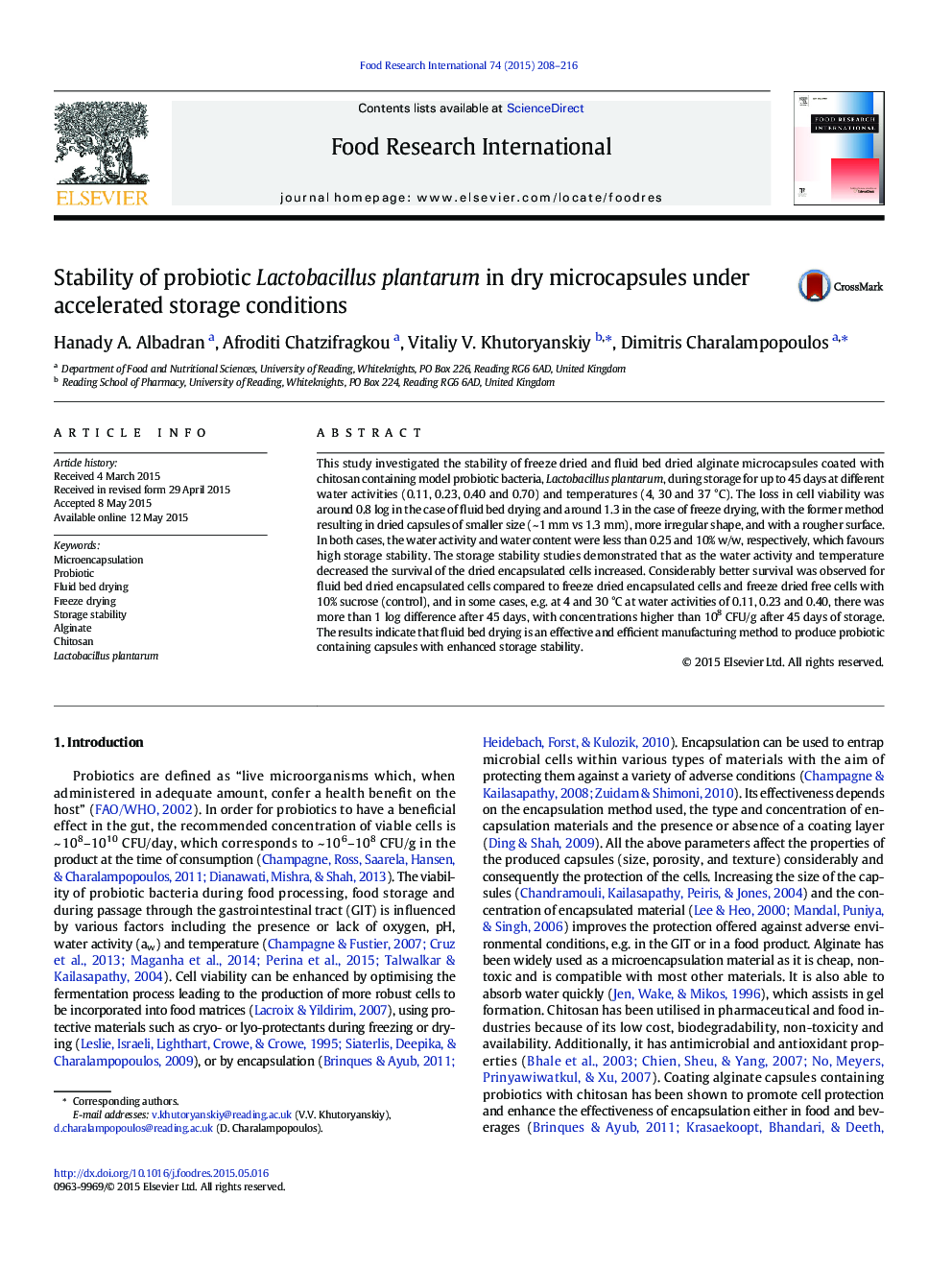| Article ID | Journal | Published Year | Pages | File Type |
|---|---|---|---|---|
| 4561421 | Food Research International | 2015 | 9 Pages |
•Fluid bed drying produces smaller and irregular dried capsules than freeze drying.•Encapsulated probiotics survived better fluid bed drying than freeze drying.•Storage of dried encapsulated cells increased as temperature and aw decreased.•Fluid bed dried encapsulated cells demonstrated the highest storage stability.•Improved stability might be due to structural collapse and capsule shrinkage.
This study investigated the stability of freeze dried and fluid bed dried alginate microcapsules coated with chitosan containing model probiotic bacteria, Lactobacillus plantarum, during storage for up to 45 days at different water activities (0.11, 0.23, 0.40 and 0.70) and temperatures (4, 30 and 37 °C). The loss in cell viability was around 0.8 log in the case of fluid bed drying and around 1.3 in the case of freeze drying, with the former method resulting in dried capsules of smaller size (~ 1 mm vs 1.3 mm), more irregular shape, and with a rougher surface. In both cases, the water activity and water content were less than 0.25 and 10% w/w, respectively, which favours high storage stability. The storage stability studies demonstrated that as the water activity and temperature decreased the survival of the dried encapsulated cells increased. Considerably better survival was observed for fluid bed dried encapsulated cells compared to freeze dried encapsulated cells and freeze dried free cells with 10% sucrose (control), and in some cases, e.g. at 4 and 30 °C at water activities of 0.11, 0.23 and 0.40, there was more than 1 log difference after 45 days, with concentrations higher than 108 CFU/g after 45 days of storage. The results indicate that fluid bed drying is an effective and efficient manufacturing method to produce probiotic containing capsules with enhanced storage stability.
